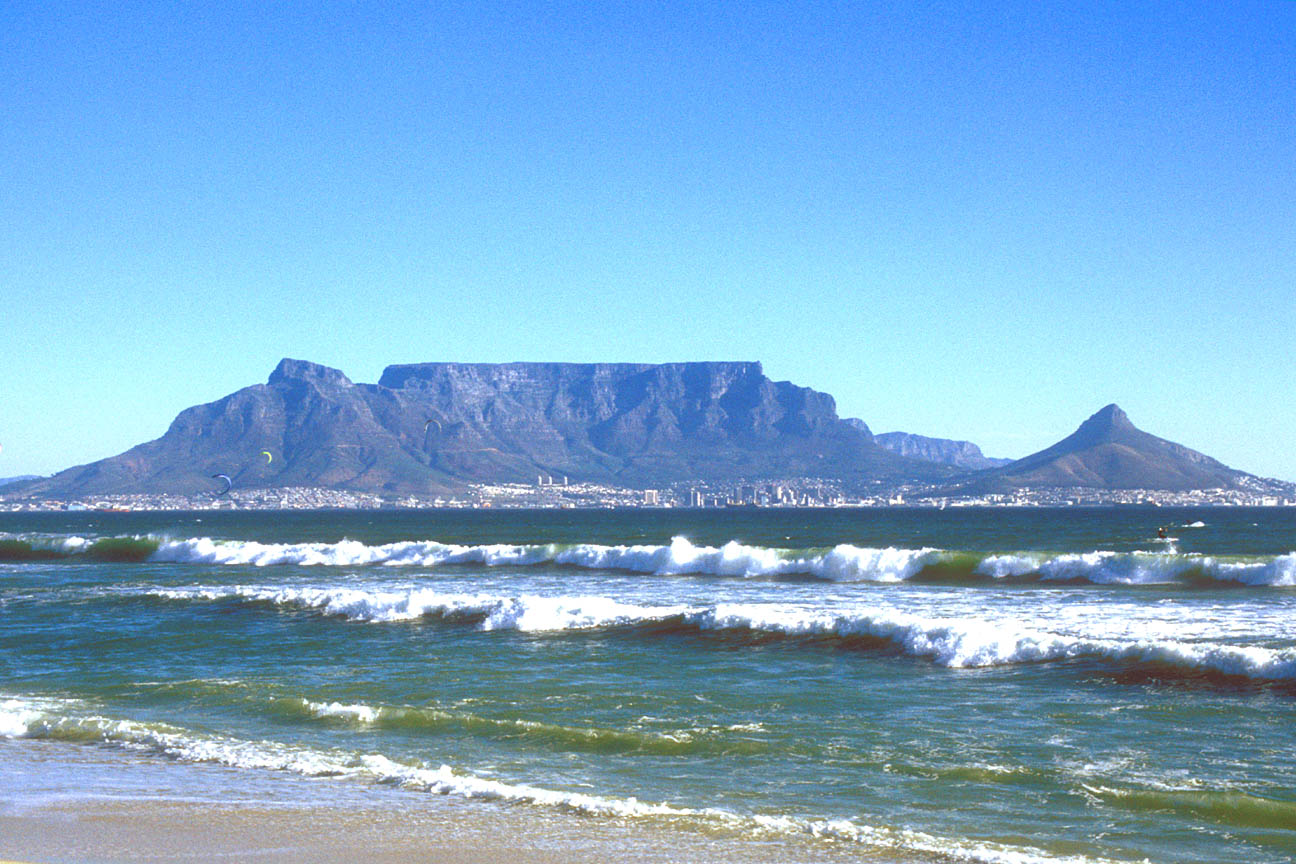
Two hours before sunrise this morning, I headed out to the Marina for a very special boat trip: an expedition to watch great white sharks predating on seals. But the weather forecast was grim: temperatures were dropping, the wind was building up, and rain was forecast along with sixteen-foot waves. We met on the dock with Rob, the captain (whose previous clients for these expeditions include Peter Benchley, author of Jaws) and the marine biologists who were going along, to discuss our options in light of the steadily worsening weather. It was clear that cage-diving with the sharks would be out of the question; as Rob put it, it would be like being inside a clothes-washing machine. But could we go out at all? We decided to risk it, and we could head back if conditions became too rough.
I was slightly alarmed by the fact that the boat was only about sixteen feet long. Some of the great white sharks in these parts grow bigger than that. I had watched a video of a small shark jumping out onto a large boat; if a big shark tried that with our boat, it would neatly sink us. Rob assured me that we would be very unlucky for that to happen, which didn't seem to answer my concern.
We loaded our gear onto the boat and headed out into the darkness. It was freezing; I was shivering despite wearing three jackets, gloves and a scarf. The waves were large, tossing the boat around as we surged out to sea. Would we get to observe our quarry?
At this point, I should probably explain what all this was about. The great white shark, of Jaws fame, is the largest carnivorous fish in the sea. They are rarely seen, but near Seal Island, in the Cape of Good Hope, they are not only reliably spotted, but are even seen engaging in a certain extroardinary behavior. They swim below seals, then launch themselves upwards to attack, with a force that sometimes takes them fully clear of the water. Rob's partner Chris was the first to observe this behavior some years ago, and they created a stunning National Geographic video special, entitled Air Sharks.
After about forty minutes, as the sun came up, we reached Seal Island. It was small, no more than a few hundred yards long, but the number of fur seals living on it was extraordinary; as I later discovered, there are eighty-four thousand of them living there. Many were sitting on the rocky island, surrounded by penguins and other seabirds, while others bobbed around in the surrounding waves. But in order to eat, they had to go fishing, and this meant venturing beyond the safety of the island to deeper water. The sharks knew this, which is why they came to these parts. Unlike other fish, great white sharks are warm-blooded, and they have to consume several seals a day in order to fuel their huge bodies.
We circled the island, watching the water intently. It was not long before someone yelled, "Predation, three o' clock!" We looked and saw a flurry of commotion in the water, but it was hard to make out details. A seal's flipper, a shark's tail, and lots of splashing. Then silence, as the birds flew down to feast upon the remnants. Shortly afterwards we witnessed another predation. We did not get a clear look this time either, but we did see the shocking sight of a fountain of foamy blood, some three feet high, spurting out of the sea as the shark hit its prey.
On our next sighting, a little later, we saw a little more. This time the seal, desperately seeking to escape its pursuer, leapt out of the water as it swam, porpoise-style. It was followed by the huge triangular dorsal fin of the shark, slicing through the water. This was over quickly, with little commotion; perhaps the shark had downed it in a single gulp.
A long time passed with no further sightings; then we saw the ultimate sight. A huge shark exploded out of the water. It was right there, straight out of Jaws: dark back, white belly, vast gaping mouth, and soulless black eyes. It landed back in the ocean with a tremendous splash, as another seal lost its life.
This was to be the last sighting of the morning, despite our trying to attract the sharks by pulling a dummy seal behind the boat. The weather was getting worse, and the sharks, thought to be sensitive to pressure changes, were probably going deep. Rob decided that it would be best to head back. I heartily agreed; in fact I was beginning to feel considerably nauseous at this point. As a precaution, I gulped down a motion-sickness pill, and promptly threw up my breakfast over the side of the boat.
Unfortunately, aside from the nausea, this had the effect of making my body-temperature plummet. In the already-freezing conditions, this made me shiver violently, feeling appallingly sick. Yet there was nothing to be done; I just had to tough it out all the way back. Finally we reached the hilly coast. "Not a moment too soon," I croaked as we approached the dock, and then as we pulled in, I leaned over the side and lost last night's dinner.
But it was worth it for the experience. Yesterday I had
Esa einai el he-harim brought to life; today it was a verse from
Barchi Nafshi, which we recited today for Rosh Chodesh. As part of celebrating the grandeur of creation, it comments upon the ocean: "This is the ocean, great and broad... where boats travel, and this Leviathan that You have formed, to sport in it."
And what a sport it is!
















